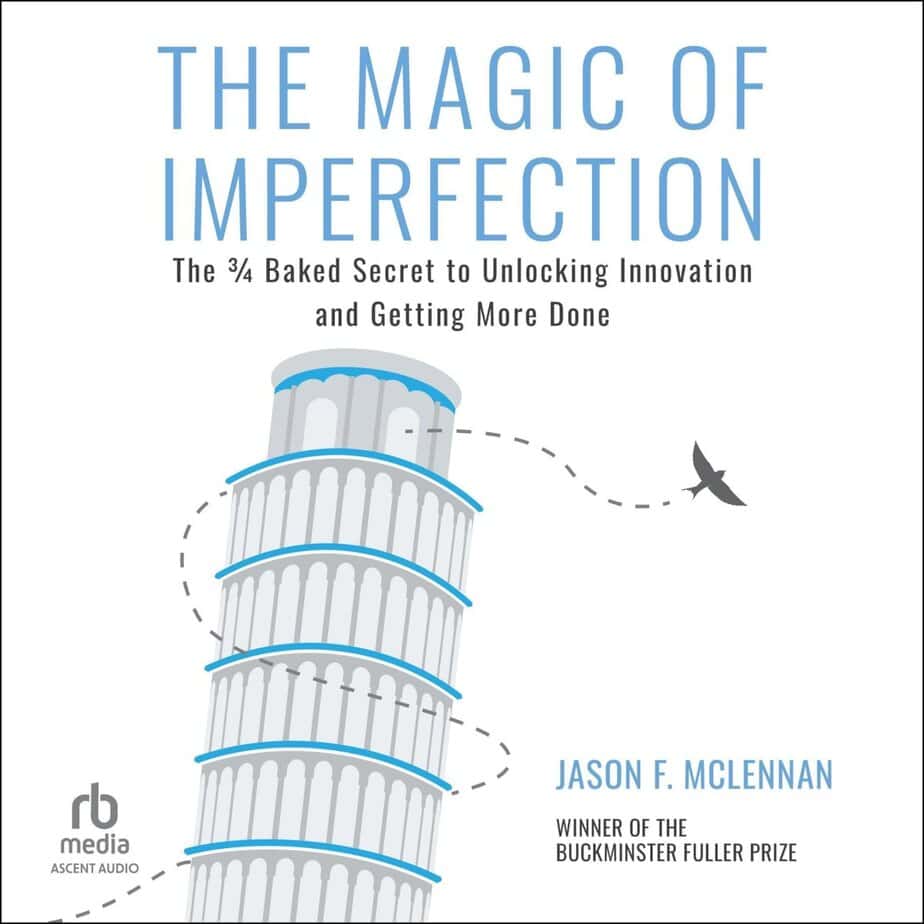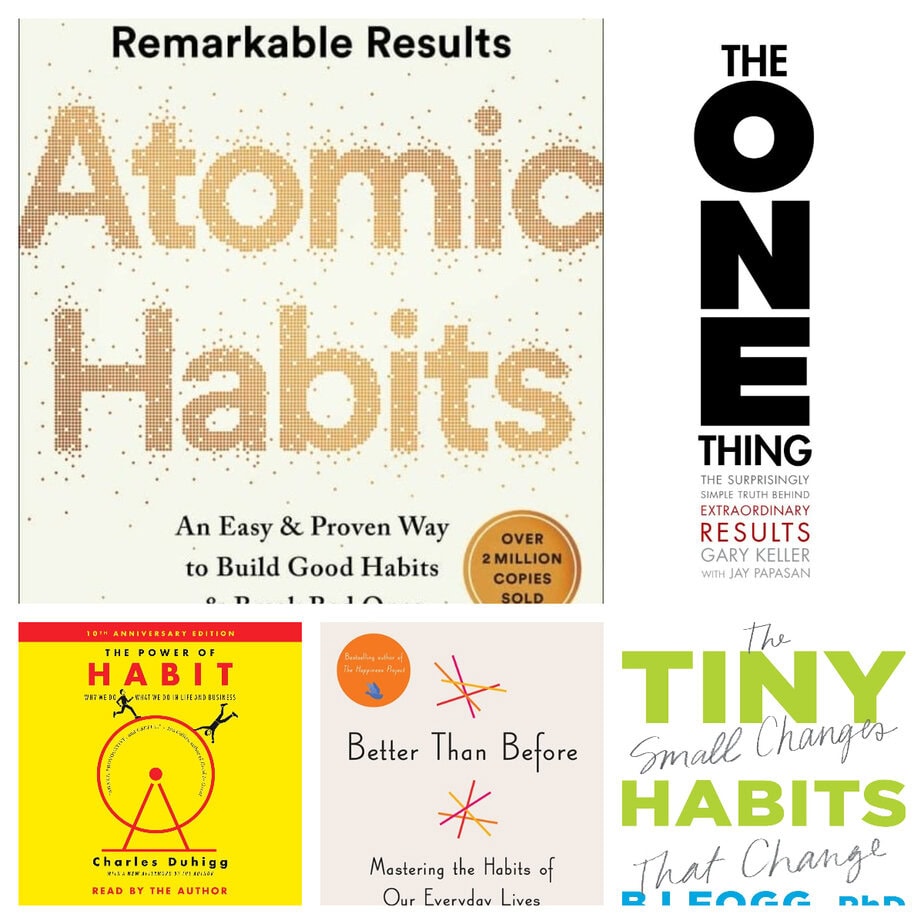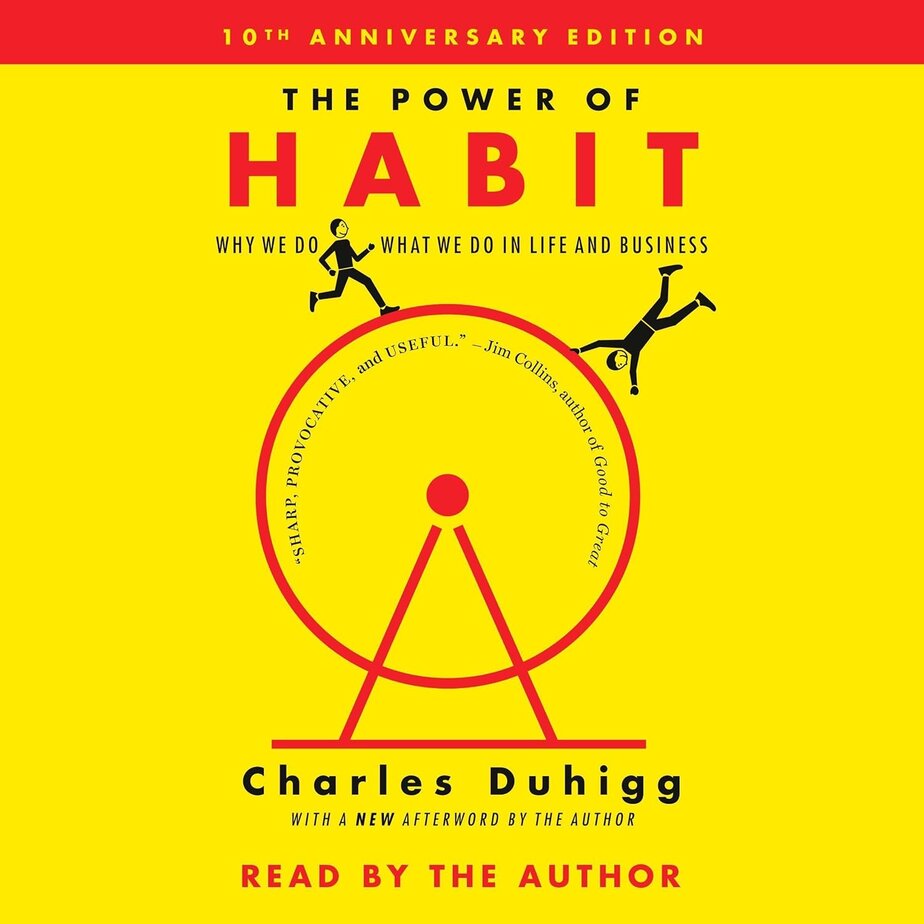The Magic of Imperfection:不完美的魔力
The ¾ Baked Secret to Unlocking Innovation and Getting More Done 英语有声书
The Magic of Imperfection – Jason F. McLennan
Famed American actress Demi Moore at last tells her own story in a surprisingly intimate and emotionally charged memoir.

The Magic of Imperfection:
Perfection is something many of us chase, especially when it comes to our work or projects. Yet the more we try to make things flawless, the more overwhelming and time-consuming the process becomes. The Magic of Imperfection by Jason F. McLennan offers a refreshing alternative: the idea of three-quarters baked thinking.
As someone who often lives by the principle, “let’s go now, we have the main idea already anyway,” I tend to move forward, especially in situations where things can still be fixed along the way. McLennan’s idea of three-quarters baked thinking felt like a perfect representation of that mindset.
When I first launched this book blog, for example, it was far from the polished version I had in mind, but I put it out there and refined it step by step. Looking back, most of the times I’ve approached projects with this three-quarters baked attitude are the ones that actually worked and kept me moving forward.
Many books push the pursuit of perfection, while others lean on the vague idea of “just accept flaws as they are.” The problem is that neither approach shows us how imperfect is still useful.
The Magic of Imperfection, on the other hand, introduces a middle ground that feels concrete and achievable. A three-quarters baked idea is not clumsy or half-baked. Instead, it has shape, clarity, and purpose. It works well enough to stand on its own, yet it still leaves room for growth and improvement.
McLennan illustrates this philosophy with relatable examples, drawing from both his love of cooking and his professional career as an architect. He also provides a practical way to figure out when something is at the three-quarters point.
By asking how important the task is, how much effort it requires, and how clear the outcome needs to be, you can calibrate your work and stop over-polishing. I especially liked how he explained that this approach helps not only with personal productivity but also with teamwork. It gives groups a shared language for deciding when a project is ready to move forward, which makes collaboration smoother.
The Magic of Imperfection reminds us to focus on what truly matters: the work we create, the people, and experiences we love. The three-quarters baked philosophy encourages us to let go of perfection without lowering our standards. Instead, it opens the door to continuous improvement, collaboration, and personal growth.
If you’ve ever felt stuck between chasing perfection and giving up too soon, this book offers a refreshing and practical perspective. It shows that sometimes the best version of our work, and ourselves, emerges when we allow things to be three-quarters baked.
Summary
The 3/4 Baked Approach: How Embracing Imperfection Can Boost Creativity and Productivity
The idea of “three-quarters baked thinking” challenges the common pursuit of perfection. Instead of waiting until every detail feels flawless, this approach suggests sharing your work once it has enough shape and clarity to stand on its own. At this stage, it is meaningful, usable, and elegant, even if it still has room to grow.
Unlike a half-baked idea, which feels incomplete and underdeveloped, a three-quarters baked idea has already taken form. It may not be perfect, but it works in practice and allows space for improvement along the way.
What makes this mindset so effective is the balance it creates. Rather than expanding a project endlessly or polishing it beyond necessity, the focus is on reaching the point where it can be shared, tested, and refined.
The secret lies in being fully present in your work. True creativity thrives when your attention is centered, not scattered by constant busyness. This presence sharpens your intuition, helping you recognize when something is ready to be released into the world.
The Magic of Imperfection: 不完美的魔力
打破完美主义的束缚,完成你的创意项目:这是一本打破常规的指南,教你通过战略性不完美来克服创作障碍,完成你的作品。
世间从不缺乏创意之人——为什么有些人能将自己的想法付诸实践,而另一些人却不能?为什么有些人成果丰硕,而另一些人却在截止日期前苦苦挣扎,甚至无法完成项目?
在本书中,“实干”大师杰森·麦克伦南(Jason F. McLennan)分享了提高生产力、激发创新以及实现个人成功的秘诀。通过采用他的“七成火候”理念以及围绕该理念的关键经验,你不仅能够大幅提高产出,还能让创意源源不断。
麦克伦南的创意成功秘诀包括以下几点:
学会期待失败
发现反馈的力量
学会成为“平衡舵”
利用动力推动创意前行
我们都听过“完美是优秀的敌人”这句话——对完美的过度追求往往是阻碍很多人的绊脚石。一味追求完美意味着几乎没有什么事情能够真正完成,而灵感也常常因为人们的拖延或无休止的自我审视而受阻。越是追求完美,它就越遥不可及。
这个世界充斥着半途而废的想法——但几乎不存在完美的创意。通过阅读《不完美的魔力》,你将学会如何切实提升自己的工作效率、加快工作速度,同时提高工作质量。
本书亮点:
适合里克·鲁宾(Rick Rubin)《创作行为》(The Creative Act)的读者群体:对于那些希望在克服完美主义的同时更好地理解创意和创造力的读者来说,这本书将使他们受益匪浅。
核心受众广泛且活跃:麦克伦南在多个领域广为人知且极具影响力,这些领域包括绿色建筑、建筑设计、环保主义以及工程和室内设计等领域,涵盖数十万人。
全新视角:本书以一种反传统却行之有效的方法挑战了传统的生产力观念,这种方法倡导策略性地接纳不完美。
强大平台支持:作者通过国际生活未来研究所(International Living Future Institute)接触到超过4万名从业者,每年演讲8到12次,并在建筑及可持续发展领域保持着较高的活跃度。
专家级作者:麦克伦南是巴克敏斯特·富勒奖(Buckminster Fuller Prize)和美国《工程新闻记录》卓越奖(ENR Award of Excellence)的获得者,现任Perkins & Will(全球第二大建筑公司)的首席可持续发展官,也是“活力建筑挑战”(Living Building Challenge)的发起者。
目标读者:
寻求创新策略的企业领导者和创业者
建筑师、设计师及创意专业人士
项目经理和团队负责人
在提高生产力方面遇到困难的完美主义者
刚进入职业生涯的应届毕业生
可持续发展与绿色建筑领域的专业人士
商业创新和提高生产力类书籍的读者
《不完美的魔力:以“七成火候”解锁创新与高效能的秘诀》
前言
引言——迈向成功的“七成火候”法则
第一章——避免追求完美
第二章——期待失败
第三章——反馈的魔力
第四章——校准与“七成火候”之道
第五章——截止日期的魔力
第六章——动力的魔力
第七章——流程的“奴隶”
第八章——为成功进行反向规划
第九章——成为平衡舵
第十章——大脑右半球的嵌套时间
第十一章——“七成火候”团队的魔力
第十二章——现代社会中的“七成火候”
第十三章——“七成火候”式思维
资源一——问题制造者的特质
资源二——不完美的魔力学习指南
英语有声书对提高英语学习有多种帮助:
- 听力理解能力:研究表明,定期的听力练习可以提高听力理解能力高达30%。有声书让你接触到不同的口音、语调和语速,这对于理解英语口语至关重要。
- 词汇量提升:根据语言学家的研究,通过听力材料学习新词汇的效果比单纯阅读高出50%。有声书中的词汇使用通常比较丰富,可以帮助你们接触到更多的新词汇。
- 发音练习:正确的发音是语言学习中的关键部分。有声书可以帮助你们模仿正确的发音,尤其是对于难以掌握的音节和单词。一项针对非母语英语学习者的研究发现,通过听有声书,学习者的发音准确度提高了大约40%。
- 语法理解:通过听有声书,你们可以更自然地理解语法结构,尤其是在句子中的实际应用。一项针对中级英语学习者的调查发现,定期听有声书的学习者在语法测试中的平均分数提高了25%。
- 文化理解:有声书常常包含丰富的文化背景信息,有助于你们了解英语国家的文化。据教育心理学家估计,通过文化内容的学习,学习者的语言习得效率可以提高20%。
- 兴趣培养:有声书可以作为一种娱乐方式,让你们在享受故事的同时学习英语。根据一项调查,70%的学习者表示,通过听有声书,他们对英语学习的兴趣有所增加。
- 语言环境模拟:对于没有英语环境的学习者来说,有声书可以模拟一个英语环境,帮助他们适应英语交流。研究表明,模拟语言环境可以提高语言习得效率约15%。
应该如何正确使用有声书的方法:
- 选择合适的材料:根据你们的英语水平选择适合的有声书,从简单的开始,逐渐过渡到更复杂的内容。
- 重复听:对于难以理解的部分,可以反复听,直到理解为止。
- 跟读:模仿有声书中的发音和语调,进行跟读练习。
- 做笔记:在听的过程中,记录下不熟悉的单词和短语,之后进行查阅和学习。
- 理解内容:不仅要听,还要理解内容。可以边听边看文本,或者听完后尝试复述故事内容。
- 利用多种资源:结合有声书和其他学习资源,如词汇书、语法书等,全面提高英语能力。
- 定期复习:定期复习听过的内容,以巩固记忆。
- 讨论和分享:和朋友或学习小组讨论有声书的内容,可以提高口语表达能力。
- 设置目标:为自己设定听力目标,比如每天听多少分钟,或者每周完成一本有声书。
- 享受过程:将听有声书作为一种享受,而不是单纯的学习任务,这样可以提高学习效率和兴趣。







